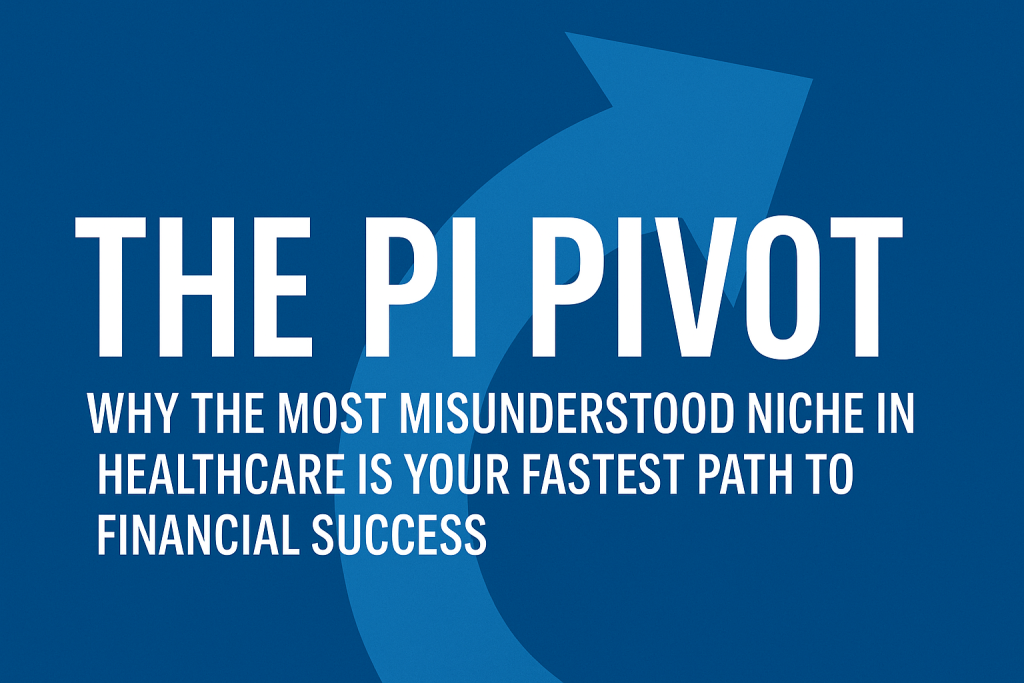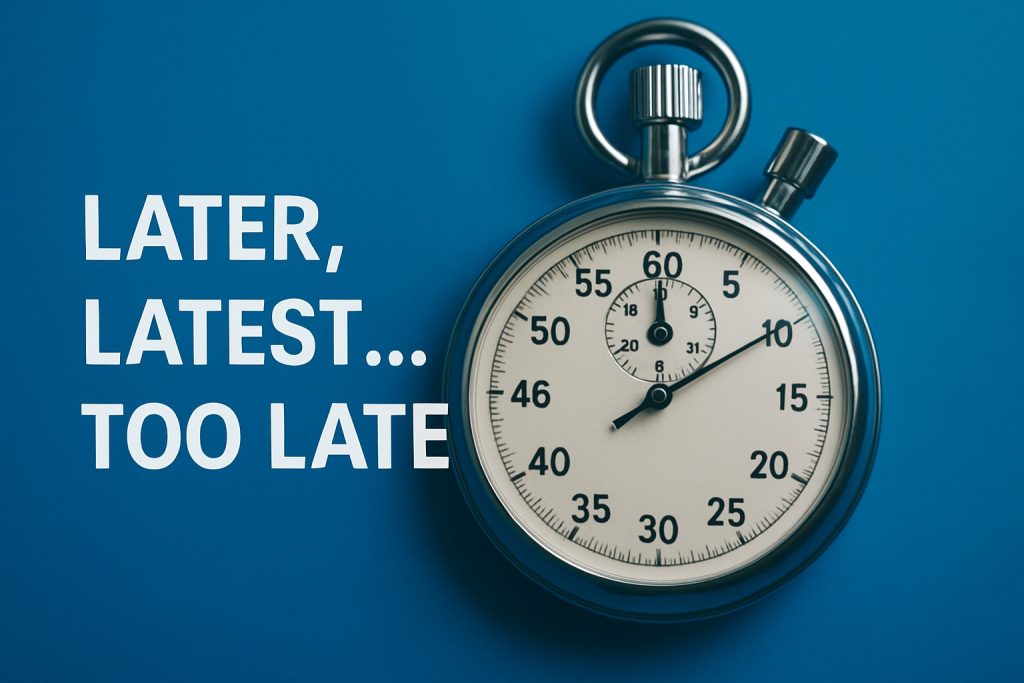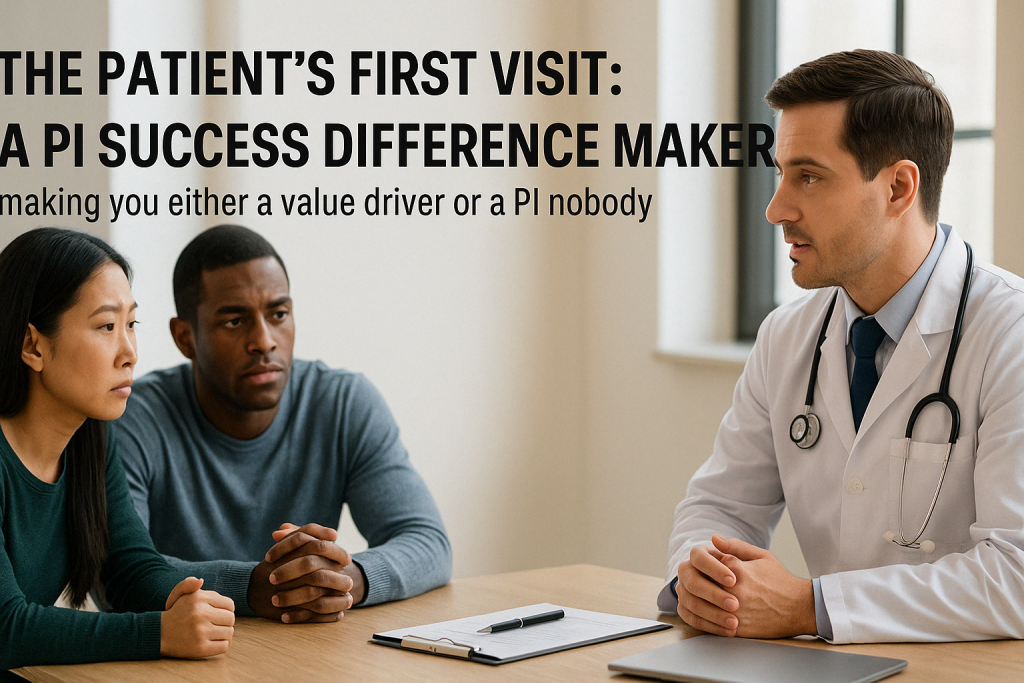The PI Pivot

Traditional healthcare is flooding practices with crisis. The path to financial hope and stability is the Personal Injury (PI) segment. PI is the most misunderstood, yet financially rewarding, niche in medicine. In PI, your documentation and expertise directly influence higher financial outcomes, granting you the leverage and respect you deserve. Stop fearing PI—it’s time to make The PI Pivot.
Think Ahead So You Don’t Come Out Behind in Your Personal Injury Segment

In personal injury medicine, most problems start small and go unmanaged. Success does not reward the reactive; it rewards the prepared. The true edge in your PI segment is about thinking ahead from using protective lien agreements to pre training your staff so you do not come out behind financially or operationally.
Turn Battles into Bridges: Slay the Medical Bill Payment Problem, not the Law Firm

Tired of fighting with law firms over medical bill payments? Stop making the law firm your enemy. Learn how to reframe conflict into collaboration and control the negotiation to get paid fairly without destroying professional relationships.
How to Crack the Law Firm Dam and Make That PI Money Flow

Struggling with lowball offers from law firms? Don’t match force with force. This guide reveals a tactical approach inspired by a classic movie, teaching medical offices how to use strategic leverage, not brute strength, to get paid what they’re owed. Learn how to find the “cracks” in a law firm’s defenses and let pressure—applied over time—do the rest.
Negotiating with Law Firms Is a Process You Can Control

Negotiating with law firms in the personal injury (PI) field is a process, not a one-time event. It’s a slow simmer, not a microwave moment. Mastering delayed gratification and strategic silence gives you control. Expect pushback, but don’t panic. By embracing the long game, you can ensure your business gets paid fairly for the care it provides.
Throw D.A.R.T.S. for Medical Office Success in Personal Injury

You don’t have to just hope for success in your personal injury practice. This blog post introduces the D.A.R.T.S. framework—a simple yet powerful system that helps medical offices achieve operational excellence. Learn how to use five key functions—Distinctive Delivery, Accurate Accounting, Relentless Resolution, Targeted Tracking, and Strategic Systems—to improve how you treat patients, collect revenue, and build strong relationships with law firms.
Later, Latest … Too Late for Medical Offices in Personal Injury

Later might sound like a plan, but in the world of personal injury medicine, it’s a dangerous delay. This post reveals how procrastination costs medical offices missed opportunities for growth and higher collections, while exposing them to legal and financial risks that could have been avoided. Learn why timing isn’t just important—it’s everything.
Why Doctors Lose to PI Law Firms and How to Win it Back

Personal injury can be a practice lifeline, but only if you stop losing money to law firms. Uncover the essential strategies for MDs to protect their value, support their bills, and effectively negotiate so you can profit more and become irreplaceable in PI.
From PI mess to PI success — One Provider’s Story

Follow the incredible journey of Dr. Peters, a medical provider drowning in personal injury (PI) losses, who transformed his business from an 80% deficit to an average 88.5% recovery. Learn how strategic intervention and expert coaching not only saved his practice but turned him into a respected “value driver” in the PI world.
Doing PI Right Starts with the Patient’s First Visit

Today, we’re diving into the patient’s first visit—a critical moment that determines your role in a personal injury (PI) case. It’s your launchpad to becoming a value driver. Learn how to gather crucial documentation, identify hidden issues, and avoid pitfalls. This initial encounter sets the foundation for your patient’s claim, legal strategy, and your payment rights.


